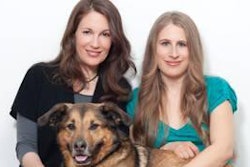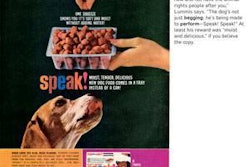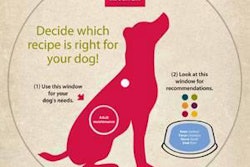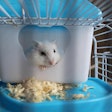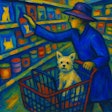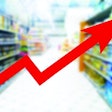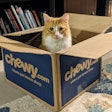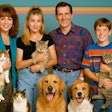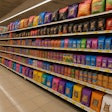
In 2010, sales of the overall global pet market remained positively resilient (a predicted US$80 billion), according to Lee Linthicum, head of global food research for Euromonitor International. This represents a growth of 4.4% over 2009. When the entire pet care channel is broken into categories, dog and cat food are the biggest categories, with total market shares of 55%. The dog food category has grown in its relative importance against cat food, says Linthicum. This is due in part to greater ownership of dogs in general, especially in emerging markets such as Latin America.
North America is by the far the largest retail market for petfood. It is also the most mature market, with the average household expected to spend US$225 per household on petfood and pet products in 2010. In contrast, Eastern Europe and Latin America are relatively immature markets with average household expenditures of less than US$50, less than a quarter of those in North America. However, household expenditure on pet care has risen tremendously over the past five years. In Eastern Europe, household expenditure has grown by more than 60% over the past five years, which is equivalent to 13% every year. This is largely due to the fact that many pet owners are still feeding their pets with table scraps and home-cooked food, not commercially prepared food.
According to Euromonitor, cat treats and mixers are the fastest growing segment in the petfood, treats and mixers category, increasing market share globally by 12% over the past 10 years. Categories like premium dog food (9%), premium cat food (9%), dog treats and mixers (7%) and pet dietary supplements (5%) have also experienced growth in a global way.
Value-minded private label petfood is also increasingly bringing new consumers into the global petfood markets, especially in developing markets like the Asian-Pacific region, Latin America and Eastern Europe. This trend is especially bolstered by the expansion of supermarkets/hypermarkets in these regions, as well. In more developed markets, private label petfood is becoming more premium-minded, and the global expansion of pet superstores is creating new opportunities for private label petfood to grow market share.
Treats, premium food and an emphasis on pet healthcare are also driving global growth. In well-established markets like the US and Western Europe, consumers pay close attention to labels, packaging and marketing claims. "Natural" continues to be the buzzword driving US consumers to choose one petfood over another on the shelf, while claims like "no artificial color" and "no preservatives" are not as popular as they were several years ago, says David Lummis, senior pet market analyst for Packaged Facts. Recent research stressing the importance of the human-animal bond and the humanization of companion animals are strong drivers in the way consumers perceive pet products and pet brands, in general.
Pet humanization has also led to specialized formulas flooding rapidly growing markets like Brazil and China, with foods addressing weight loss and management, arthritis relief, sensitive skin, diabetes, digestive/urinary tract health, heart health, immune system support and mental development and health. In Japan, petfoods focused on the aging and senior pet population are popular.
Euromonitor predicts that countries like India, Russia, Turkey and Poland will experience the fastest amount of growth until 2015. The US, Brazil and Japan will remain the largest markets. Globally, the entire pet segment has room to grow and more market share to gain in developing regions in Eastern Europe, the Middle East and China.
See "More Images" tab for data and figures presented here.


